When Cryptshow.Net creator Ron McLellen asked me to do an article of the ten most influential zombie films I was beside myself. I’m a huge admirer and follower of the genre from countries all across the world so choosing only ten films out of the hundreds available was going to be a daunting task. Which films to choose whether they are just plain excellent verses whether or not they’ve had an impact of the genre, this was going to be the hardest choice for me but I hope that the ten films I’ve chosen will suffice it for the most diehard of zombie fans, and if not, I invite criticism of all kinds.
The zombie genre would not be what it is today without the success and influence of director George A. Romero’s original Night of the Living Dead (1968). Considered the grandfather of zombie films (although Romero considers his creature ghouls and not zombies) NOTLD gave cinema a true monster in the returned from the dead and walking around aimlessly craving human flesh creation. The zombie had appeared in cinema prior to this film but was never more popular until after the success of this film. In fact, many zombie films prior to NOTLD were played for humor while Romero’s film is played 100% straight with a growing sense of dread throughout. There is no zombie film produced today that does not owe a debt of gratitude to the influences that NOTLD has had on the genre.
Romero would again change the face of the zombie genre with his next zombie film Dawn of the Dead (1978). Whereas NOTLD was played straight, DOTD had its tongue played firmly in cheek. Romero has repeatedly maintained that this film was a live comic book which is evident from it’s over the top violence (the beginning massacre and following moments) and comic overtones (displayed especially at raiding of the mall montage and the climax of the film). Although the film has its comic moments it’s also a very polarizing film due to the film’s themes and political commentary throughout which is something that the zombie genre (and for that matter horror films in general) are not known for. Another influence that this film had on the genre is its international success. Because the film was co-produced by the Italian director Dario Argento, an international version (simply titled Zombi or Zombi, Dawn of the Dead) broke all kinds of Box Office records and opened the doors for other zombie films to be produced all over the world.
On the opposite spectrum of the zombie genre there was crafted Return of the Living Dead (1985) which took Romero’s zombie and turned it on its head. This film created the talking and sometimes intelligent zombie and gave them a purpose – “brains.” Played for laughs as well as scares this cult favorite gave future zombie productions a different type of zombie from the one that Romero made popular. This film also had a huge influence of the music for the zombie film (and horror films in general). Although the international version of Dawn of the Dead had the rock music of Goblin, it was ROTLD that made rock music popular in zombie films. Its album was a huge success at the time. The debate over talking or non-talking zombies would never be the same after the success of this film.
Due to the international success of DOTD, the Italian film market would forever change. To follow in the footsteps of that film was the in-name-only sequel Zombi 2 (aka Zombie) (1979) from acclaimed director Lucio Fulci. Returning to the original zombie from voodoo folklore this film has nothing to do with DOTD but it acts as somewhat of a prequel to the events in that film. Fulci’s film was brutal and gory with no limits and uncompromising in every way. This success of this film not only mad Fulci and international name to genre fans everywhere but also influenced the entire Italian horror film industry. After this film there were a plethora of zombie films that assaulted the international market under all types of relevant (and sometimes irrelevant) names. Fulci himself would direct three more highly influential cult favorites in City of the Living Dead (1980), The Beyond (1981), and House By the Cemetery (1981). The Italian film industry would never be the same again.
I would have to say that the most influential “traditional” zombie film would have to be director Wes Craven’s The Serpent & the Rainbow (1988). Based on the non-fiction book by Wade Davis is as psychological thriller on the origins of zombification, magic, voodoo, and an entire culture of people who “believe.” There has been no other film like it and I doubt there will be another. Although the film was a modest success at the Box Office its cult status is undeniable. Many of the more low-key and indie films borrow a lot more from the zombie conventions of this film rather than the more spectacular elements of all the films thus far mentioned. Although the film White Zombie (1932) has the distinction of being one of the first zombie films to feature “traditional” zombies its influences on the genre in no way out way those of Craven’s film.
If it’s splatter you want than it’s splatter you’ll get in director Peter Jackson’s over the top film Braindead (aka Dead Alive) (1992). Not only did this film introduce the world to Jackson but it also introduced to the world a more over the top and comedic approach to the zombie film which offered not only laughs and buckets of gore but a “real” plot and story to what could have easily become another throwaway zombie film. It’s also a “love affair” for not only zombie fans but horror fans in general as it was a film that openly paid homage to many of the films that came before it (long before Scream made it “cool” to do so). This film made it possible for other low budget films to be made. With the success of this film came a flood of low budget zombie splatter films (now a genre all its own) from all over the world (most notably from the shores of Japan whose films were way over the top and the zombie genre seemed to be everywhere) some for better and some for the worse.
In 2002 the zombie genre would again be changed forever with the release of 28 Days Later. Although now traditionally a zombie film, this film features the infected who are every bit a zombie except for the fact that they aren’t dead. This film also introduced the fast moving zombie, or more appropriately made them popular. This film broke all types of taboos in regards to the mainstream zombie genre not to mention the fact that it was shot on digital video giving the film a gritty and almost realistic aesthetic. This film also made “infected” people popular to include in the zombie genre when every other similar film before this one separated the two sub-genres. After this film became an international hit the shores were consumed with digital video filmed zombie films some of which have developed their own cult following.
Mentioning the popularity of fast zombies cannot be discussed without mentioning the most influential one of them all which is the remake of Dawn of the Dead (2004). Whereas 28 Days Later introduced the fast running infected, it was this film that introduced the real fast moving…no running zombie. This remake, at the time, was a rarity as it had many name actors attached (Sarah Polley, Ving Rhames, Mekhi Phifer, and Jake Webber, to name a few) in what could have been a Box Office dud considering that there had not been many zombie films that actually made a profit in years. This was a suspenseful and terror filled horror film that, while it paid homage to the original, was an original film all its own (the mark of how a remake should be made). The film was a huge Box Office success that not only made the zombie genre popular again but ushered in a new era of horror remakes (now all the rage over the past few years). The success of this film also made it possible for Romero to finally get financing for his next zombie film Land of the Dead (2005), which in my book was an excellent thing. There was no turning back now, the debate over fast verses slow moving zombies would forever change the face of the genre.
Despite what mainly people may think Resident Evil (2002) is one of the most popular and successful zombie franchises ever. It also happens to be based on one of the most popular horror video game series ever despite the fact that this first film in the franchise bares little resemblance to any of the games. A lot of the film’s popularity is due to the presence of star Milla Jovovich because at the time zombie films still weren’t as popular as they would become after the release of 28 Days Later and the remake of Dawn of the Dead. Despite the horror and terror of the film (which was slight) audiences loved the action and this film had plenty of it. Zombie films didn’t just have to be horror films but they could also be action films as well. Borrowing from the experience of playing the video game audiences had action and violence and loud music which brought the film to life. The success of this film has thus far spawned three sequels (the latest one due out in just a few months) as well as made it popular again to adapt video games for the big screen. There has also been an animated feature length film – Resident Evil: Degeneration (2008).
The final film on my list is Shaun of the Dead (2004). This hugely popular film introduced the world to the rom-com-zombie film (romantic-comedy-zombie). This loving homage to zombie films from Edgar Wright and Simon Pegg (who co-wrote the film) not only has all the requirements of the “Romero” zombie film but also throws in a dash of the romantic comedy as the main character Shaun (played by Pegg) is trying to fix his love life with his girlfriend while the events of the zombie apocalypse is just the background by which the film is played. There have been a few films of this nature (Zombie Honeymoon being the most well known and released the same year) but none have become as popular or as well loved as this film. There have been plenty of zombie comedies in the years following this film but none have been able to fuse the horror elements with those of comedy and the romantic comedy as well as this film (even though many films continue to try).
All of the zombie films discussed in this film have had a hand in shaping the zombie genre and many have even become cult classics. There are many other films that have had just as much an influence on the genre as these films and should be included on this list but these films are the ones that every self respecting zombie fan should be well versed in. Other notable films that could be included are The Evil Dead, Dead & Buried, Creepshow, Dead & Breakfast, Night of the Creeps, Lifeforce, Slither, Masters of Horror episode “Homecoming,” Prince of Darkness, White Zombie, The Beyond, [REC], Tombs of the Blind Dead, The Living Dead at Manchester Morgue, Children Shouldn’t Play With Dead Things, Shockwaves, Dead Snow, Fido, Planet Terror, and Poltrygeist, to name a few.
ABOUT THIS BLOG:
Before you read anything in this blog, please be aware that this is a writer's "personal" blog so many elements contained within are not the same opinions of those of any of the companies that the writer is associated with. This blog is simply for entertainment value and allows the writer a venue which is free from censorship.
CITY GARDEN - "The Old Woman & The Park"
On the set of the short film "A Gift"
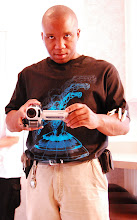
Saturday, May 29, 2010
10 Most Influential Zombie Films
Subscribe to:
Post Comments (Atom)




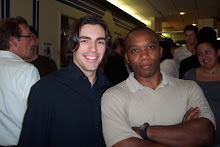
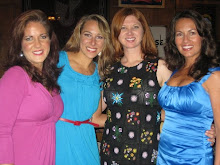
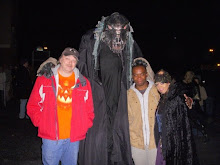
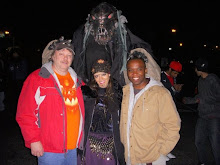

No comments:
Post a Comment